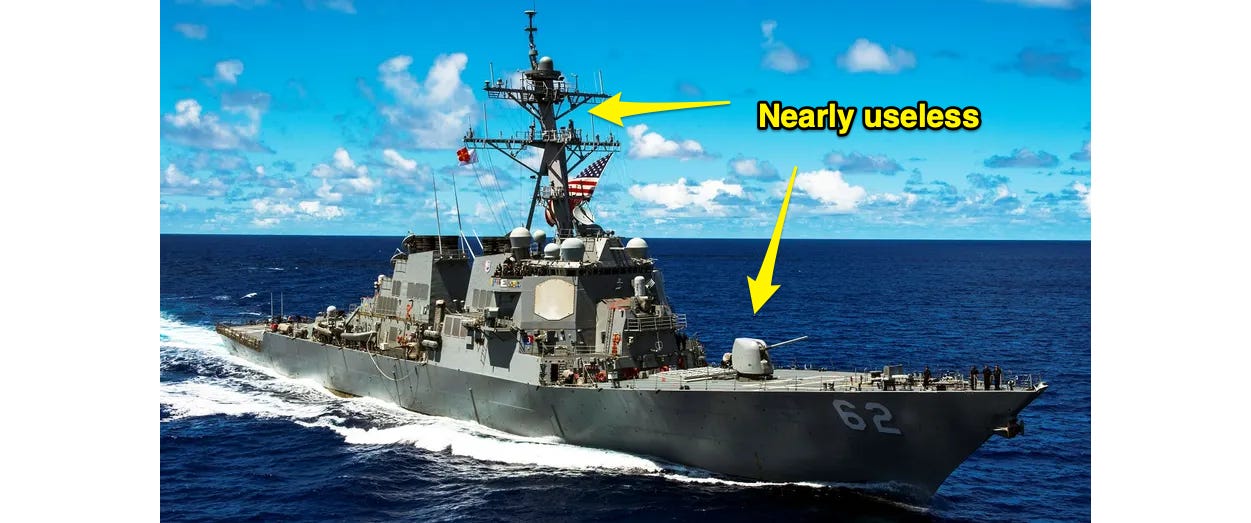
Who could have seen this coming?
As we’ve discussed many times before on C&C, one of the U.S. military’s worst practical problems is its morbid fascination with wildly-expensive, high-tech, James Bond-style weapons and defenses. I blame diversity and a lack of useful battle experience. Anyway, now that real kinetic war is underway around the world, and now that U.S. high-tech weapons systems are facing motivated enemies for the first time in any organized way, our high-heeled generals — when they aren’t in the hospital — are discovering that high-tech gadgets have some … unexpected weaknesses.
Sometimes the weaknesses are better described as fatal flaws.
The current hard lesson being learned is that our fantastically costly battleships have been armed to the teeth with billion-dollar anti-aircraft systems that can target and shoot down a Houthi missile from miles away. So far, so good. (But it’s worth pointing out that the Houthis are not a serious adversary and aren’t firing the caliber of missiles at our ships that, say, Russia or China would.)
The fly in the floating Patriot anti-missile system ointment is shaped like a cheap Houthi underwater drone. I can’t believe I’m about to write this, but all our top military brass — although hopped up on hormone treatments — never thought of building underwater anti-drone systems. They were solely focused on the air.
Media (including Fox) is doing its best to cover for this literally unbelievable, completely inexplicable oversight. Obliquely defining the problem as “changing battlefield tactics,” they are trying to paper over a massive mistake.
Are we supposed to believe the generals thought battlefield tactics can’t change?
Specifically, the Yemenese Houthis — basically modern Barbary pirates — have begun successfully demanding ransom, protection money, from commercial shippers. The deal is, if commercial shippers pay the Houthis for safe passage through critical shipping channels, then the Houthis will “protect” the shippers from the Houthis’ own underwater, explosive-tipped, remote-detonating submarine drones.
The drones are kind of like swimming mines. They’re super cheap, too, which means the Houthis can swarm lots of them all at once against the same target for a fraction of what a single missile costs.
There’s nothing in the U.S. Navy’s arsenal that can effectively protect all the civilian container ships. The Navy will have its work cut out for it just to protect against small swarms of cheap explosive underwater drones attacking our own otherwise well-defended cruisers and carriers.
As Rush always said, the military has one job: kill people and break stuff. They got distracted, and now we have no business stirring up trouble with even worse enemies than Yemenese Houthis.

☕️ REGRETTABLY ☙ Saturday, February 24, 2024 ☙ C&C NEWS 🦠
New McCullough peer-reviewed paper converts influential doc; new mystery blimp; high-tech military gear failing in combat; DA Fani Willis gets roasted by cell phone geolocation data; and more.

